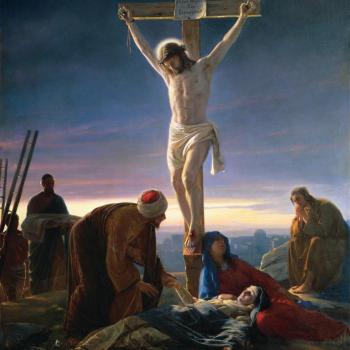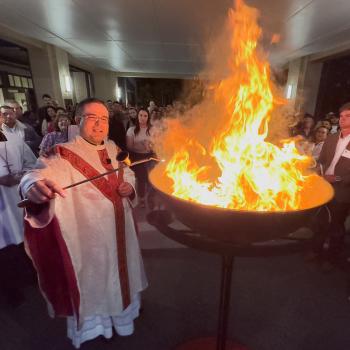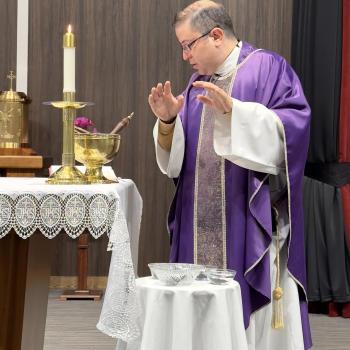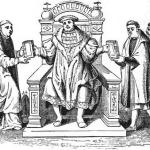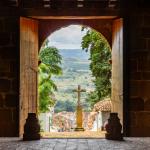I wrote this paper as a partial requirement to have the Georgia Historical Society erect a historical marker at Saint Mary on the Hill Church in Augusta. The project began as a request from Father Jerry Ragan, pastor of Saint Marys, but it became a personal year-long in depth search where I discovered many amazing things about the Sisters of Saint Joseph and the Catholic Church in south Georgia. The research helped me connect the parish where I was confirmed, Saint Joseph in Washington, to my high school and my parish in Augusta.
The paper is a bit lengthy and gets technical at times, but you will enjoy it, especially if you’re from Augusta. I am indebted to Sister Laura Ann Grady, CSJ for guidance and to Gillian Brown from the archives of the Diocese of Savannah who opened the archives for me on a cold December day when the Pastoral Center was closed. The article was published in 2006 in the Augusta Richmond County Historical Society Journal.
The founding of the Sisters of Saint Joseph by the French Jesuit priest Jean Pierre Medaille and Bishop Henri de Maupas took place in 1648 in the French town of Le Puy. The mission entrusted to the Sisters was to care for the poor, the sick, and the orphaned. The order extended its work into the United States in 1836 after the Bishop of Saint Louis, Joseph Rosati, invited the sisters to staff a school in Saint Louis. Six sisters settled in the town of Carondelet, Missouri, and became known as the Sisters of Saint Joseph of Carondelet.[1] In 1922, a diocesan religious community that also traced its origin to Le Puy, the Sisters of Saint Joseph in Augusta, Georgia, voted to become affiliated with Carondelet, thus forming the Augusta Province of the Sisters of Saint Joseph of Carondelet who for eighty years, greatly enriched and enhanced the lives of hundreds of young men and women through education.[2]
The Bishop of Savannah and Vicar Apostolic of Florida, Augustin Verot, approached this French community of Le Puy in 1865 and invited the Sisters to work in the war-ravaged South by educating children and staffing an orphanage in Savannah, Georgia. Verot, a native of Le Puy and member of the Society of Priests of Saint Sulpice, had worked in the United States since 1857 as Vicar-Apostolic of Florida, and since 1861, also as Bishop of Savannah which encompassed the whole state of Georgia. Verot had a deep desire to reach the poorest in society, and as Rev J. J. O’Connell recorded in 1879, Verot “wished to see God better known and more faithfully served.”[3] Bishop Verot was dedicated to his flock in Georgia, and the harsh conditions did not keep him from ministering to it. In this great spirit of faith and missionary work, he invited the Sisters to educate the least fortunate of his diocese, black children of the newly enfranchised Blacks, despite the opposition faced by Southern society. The Sisters first arrived in Saint Augustine, and by 1867 enough sisters had arrived in Saint Augustine that Verot opened a school in Savannah for the Sisters to staff. They also ran an orphanage located in the Scarborough House in Savannah, house which Verot had provided.[4]
By 1869 the Sisters’ work was noted in the Savannah Republican when the paper reported that “the Sisters of St Joseph are now teaching one hundred colored children. They are quietly and unostentatiously accomplishing an immense amount of good amongst the colored people of this city.”[5] Unfortunately, their work was not appreciated by all in Savannah. Some Catholics and non-Catholics alike, derogatorily referred to them as the “Nigger Sisters.”[6] The Sisters ended their apostolate to black children due to financial reasons and decided to concentrate on the orphanage, which by the end of 1871 had been named Saint Joseph’s Barry Male Orphanage.[7] Verot’s efforts and willingness to serve others provided much needed support to educate black children and orphans in the diocese of Savannah, and the Sisters played a substantial role in the execution of his mission. After the First Vatican Council (1869-1870), Verot was installed as Bishop of Saint Augustine and no longer had jurisdiction over Savannah.[8]
Under Verot’s successor, Bishop Persico, the Sisters in Savannah separated from the Sisters in Saint Augustine becoming an independent diocesan community in March, 1871. Later that same decade, Perisco’s successor, Bishop Gross, asked the Sisters in the orphanage to move farther north to Wilkes County. This was the first of two major transitions the Sisters had to undergo in the diocese, the second leading them to Augusta. The orphanage moved to Washington, Georgia and on October 15, 1876, Saint Joseph’s Academy for Young Ladies opened under the direction of Sister Sacred Heart Trout.[9] Washington, despite its distance from Savannah, was only fifteen miles north from the thriving Catholic community at Locust Grove near Sharon, Georgia. The first graduate of the Academy, Ms. Nellie T. Maguire, recorded the history of Locust Grove in 1890, giving great insight into the importance of this community in Georgia and to the work of the Sisters. She cited a Locust Grove Church registry recording thirteen visits from Bishop England of Charleston between 1821 and 1839, giving evidence to the prominence of this Catholic community.[10] She also recorded that when the first convention of the Catholic Church in Georgia was held in Augusta on April 2, 1826, only three Churches operated in the state, among them the Purification of the Blessed Virgin Mary in Locust Grove, Saint John the Baptist in Savannah and Saint Patrick in Augusta.[11] Therefore, the transfer of the sisters to Wilkes County was not a move into the wilderness, but rather, to one of the three centers of Catholicity in Georgia.
Ms. Maguire confessed in her manuscript that by the 1870s, the prominence of Locust Grove had decreased due to the migration of the wealthier Catholic families farther west in search of better farmland, yet the community still had a priest, Father J. M. O’Brien. Father O’Brien, she wrote, was the first priest ordained by Bishop Gross. After Bishop’s Gross decision to transfer the sisters to Washington, Ms. Maguire noted, that Father O’Brien’s “next move was to solicit the aid of the Sisters of St. Joseph, whom Rt. Rev. Bishop Gross had lately transferred from Savannah to Washington Georgia. These noble women responded promptly.”[12] Three sisters arrived in Sharon in 1878 and soon opened a boarding school for boys, Sacred Heart Seminary, which operated until 1946.[13]
Ms. Maguire expresses a deep appreciation for the Sisters’ work in this area when she meditates on the excellent aid religious women are for priests. “Wherever they [religious sisters] are, there is a blessing with them, and the town or city giving them a home is incalculably richer for their presence, not only in spiritual riches, but even in temporal.”[14] This blessing of the Sisters that Ms. Maguire exults extended through Georgia as the years progressed and the Sisters reached more children and touched more lives. By 1912, a Motherhouse had been established in Washington. The Saint Joseph’s Academy for Young Ladies had 90 students, the Loretto Academy for Boys was operational in Atlanta, and the Sisters staffed an elementary school in Brunswick, Georgia.[15]
On November 20, 1912, tragedy struck the growing community in Wilkes County. The Academy in Washington burned down and the building had to be completely demolished.[16] Six days after this unfortunate event, J. J. Farrell of the Chamber of Commerce of Augusta wrote to the Community’s superior, Mother Aloysius Bourke, inviting the Sisters to rebuild their school in Augusta. The Chamber of Commerce offered the sisters free land and lured them by describing the opportunities Augusta had at their disposal. “Augusta will give you all of Eastern Georgia and Western Carolina to draw your scholars from and offers unsurpassed opportunities for a girls [sic] college, as there is none here or in any city near. Our climate is the best in the country in the winter and more wealthy Northerners spend the winter here than any where else in the south, except certain Florida points.”[17] Bishop Keiley commented on the proposal in a November 28 letter confessing to Mother Aloysius he had “never for a moment thought of Augusta, but it may be as well to consider their offer for as I understand it they not only propose to give you 5 acres of land on the hill in Augusta, but will also give money as well.”[18] The Bishop looked forward to meeting with the commission from Augusta the following week during his visit to Washington. The offer from Augusta was too enticing to ignore, so the Sisters accepted it and began the transfer of their Motherhouse and Academy to Augusta, leaving only a convent and the boys’ orphanage in Washington.
On December 26, 1912, Mother Aloysius with Sisters Sacred Heart, Mary Louis, Raphael, and Ambrose arrived in Augusta and lived in the Dickey cottage on Monte Sano Avenue.[19] Eighteen girls of high school age joined the Sisters at Dickey Cottage to continue their education. Nine of them were Cecilia Sheridan, Susie Cullas, Mary Shipp, Jennie Hollingshead, Elizabeth Miller, Leta Bricken, Kathleen Clark, Maude Peters, and Ruth Moss who composed the first graduating class of Augusta in 1913.[20] Construction of the new Mount Saint Joseph Academy did not begin until July 6, 1913 when the cornerstone was laid.[21] The academy, located at 2426 Wrightsboro Road opened on September 15, 1915 as an advertisement in the Augusta Chronicle anticipated on September 9, 1915.[22] The Chronicle publicized a boarding and day school for girls which was affiliated with the Catholic University of America and the University of the State of Georgia that had a healthful and attractive location. It described the studies as “thorough, embracing all the branches requisite for a solid and refined education.”[23]
In order to build this new academy, the Sisters solicited funds from different institutions in the North, including a Saint Louis bank. The Sisters used the money to build the academy and invested it in the Irish-American Bank of Augusta. The Augusta bank failed in 1916, leaving the Sisters without money and with a hefty debt. The debt was so large that the Sisters were not able to make the payments, so by April 1916, the Mercantile Trust Company of Saint Louis had taken possession of the property on Wrightsboro Road.[24] The Irish-American Dime Savings Bank, the original name of the Irish-American Bank of Augusta, was founded among other banks to finance the economic boom of Augusta during the latter half of the nineteenth century.[25] The bank, which advertised in the 1900 Elks Carnival Program of Augusta, directed by its president Patrick Armstrong, seems to have enjoyed a stable financial situation.[26] The bank however no longer operated in 1917, evidenced by its absence in the city directories thereafter, which parallels the account of historian Sister Rose Margaret Schweers, CSJ, that the bank failed in 1916 “largely because an unscrupulous man stole all the money.”[27] The academy building was put up for sale and its sale became the source of a discussion in an editorial letter in the Augusta Chronicle on April 20, 1916. T. H. Garrett, Principal of Tubman High School, replied to a suggestion by the Chronicle for the Board of Education to purchase the Sisters’ Academy to convert it into the new location for Tubman High School. Garrett dismissed the suggestion with three objections. First, the building was not within walking distance from where the students of Tubman lived, second, the design of the building was not suited for a public high school and third, it was too expensive. The editor of the Chronicle explained that the cost of the building of the Academy neared $300,000, but the Sisters of Saint Joseph would not benefit from its sale since the owner of the property was now the Mercantile Trust Company of Saint Louis.[28]
Despite this unfortunate and desperate situation, the Sisters were able to remain in Augusta due to the generosity of Mrs. Kate Flannery Semmes. A native of Savannah, she was educated at Saint Joseph Academy in Washington by the Sisters and married Raphael Semmes. The obituary on the Georgia Bulletin of this selfless woman described her as “active in church and charitable work, doing much good of which no one knew but she and the recipient.”[29] On April 28, 1916, James E. Harper prepared an Abstract of Title for Mrs. Semmes of a property located on the hill of Augusta in anticipation of its purchase by her from Mabel E. Greene, Lucile E. Ghormley, and Ida Dyer Lyon. The abstract described the property as bounded north by Belleview [sic] Avenue, east by Arsenal Avenue, south by Helen Avenue [sic] and the lot of Mrs. E. M. Filber, and west by Monte Sano Avenue and the lots of Mrs. E. M. Filber and H. H. Claussen. In section 30 of the abstract, Harper annexed the 1914 will of Daniel Burns Dyer. The will mentions a “lot on the corner of Bellview [sic] and Monte Sano Avenues, in that part of the City of Augusta known as Summerville, with the improvements thereon known as Chateau Le Vert.”[30] Chateau Le Vert, a magnificent house that faced Bellevue Avenue, once belonged to Octavia Le Vert, daughter of George Walton, one of the Georgia signers of the Declaration of Independence.[31] Mrs. Semmes purchased this property and gifted it to the Sisters who on June 2, 1916 transformed the Chateau into a convent and Mount Saint Joseph Academy with the address 1218 Monte Sano Avenue.[32]
After establishing themselves in Augusta and further expanding their educational efforts, the Sisters sought the affiliation of their community with the community of Sisters of Saint Joseph of Carondelet in Missouri. Bishop Keiley encouraged this move and requested a personal approval or disapproval from each Sister of Saint Joseph in Georgia. Nine-tenths of the sisters supported the affiliation, so the affiliation went forward and was approved by Rome on September 16, 1922. On this day, the Augusta Province of the Sisters of Saint Joseph of Carondelet was instituted with 55 sisters. Mother Regis Passmore, the last superior of the diocesan community, gave way to Mother Rose Columba McGinnis of Saint Louis who became the new provincial.[33]
The Augusta Province soon began to expand its facilities. The Sisters purchased a property adjacent to Chateau Le Vert facing Monte Sano Avenue to build more classrooms. The new classroom hall was named Clemence Hall and the elementary and high schools were transferred there from Chateau Le Vert, making the Chateau exclusively the convent. In the following years, the Sisters constructed on the same property a building containing the chapel and auditorium. In 1932, Mrs. Kate Flannery Semmes once again aided the Sisters in acquiring property. This time she bought the Claussen House on the corner of Monte Sano Avenue and Helen Street, which the Sisters renamed Flannery Hall. The high school of Mount Saint Joseph was moved to Flannery Hall, leaving Clemence Hall to serve as the elementary school.[34] The 1932 Augusta Directory records that Mount Saint Joseph Academy was at 1218 Monte Sano Avenue, the Auditorium at 1214 Monte Sano, and the Convent at 2542 Bellevue. The Claussen family appears as the only proprietor on this side of the block along with the Sisters, their house being on 1222 Monte Sano. In the 1934 directory the Claussen family no longer appears, confirming the Sisters as the sole property owners on the 1200 block.[35] In 1949, a cafeteria was built, and in 1955, a kindergarten was built by the John McDonald Construction Company.[36]
The extensive property the Sisters had secured by 1932 was admired in a 1936 article of The Bulletin of the Catholic Laymen’s Association of Georgia where the newspaper referred to it asserting, “charming indeed is the location of the Convent and Academy… an ornament to the city. The spacious grounds are beautiful and picturesque, well shaded by giant oaks, magnolias, pines and cedars, and as the influence of environment is by no means an inconsiderable factor in the formation of character, the Sisters… believe that the beautiful surroundings… cannot fail to make a salutary impression upon youthful minds.”[37] The Sisters busied themselves on this beautiful property educating 47 classes at their Academy until 1960 (the last three were only elementary school classes). It became a school of tradition where up to three generations of a family attended the Academy.[38] Local girls joined the order such as Sister Rose Margaret Schweers whose mother and two maternal aunts attended the Academy in Washington, her twin sisters and herself attended the Academy in Augusta and all three sisters became Sisters of Saint Joseph of Carondelet.[39]
The Sisters of the Augusta Province did not focus solely on their motherhouse and Academy in Augusta, but also expanded throughout the Georgian territory. The Sisters further contributed to the Augusta community in December 1952 by opening Saint Joseph’s Hospital on Wrightsboro Road not too far from their original 1916 Academy.[40] An August 1956 list systematically records the houses of the Augusta Province, showing the Sisters’ activity throughout the state from their houses that were administered and unified from their beautiful motherhouse on the hill of Augusta. The list includes: Mount Saint Joseph Academy and Saint Joseph’s Hospital in Augusta, Sacred Heart Convent and St. Anthony’s Convent in Atlanta, Sacred Heart Convent in Savannah, St. Joseph’s Home in Washington, St John the Evangelist Convent in Valdosta, St. Joseph’s Convent in Brunswick, and St. Joseph’s Convent in Marietta.[41] The Sisters were transferred among these convents exposing each Sister to a variety of service and community experiences.
Bishop Gerald O’Hara described this order of Sisters working in his diocese to Cardinal Dougherty of Philadelphia in a February 24, 1944 letter while requesting permission for the sisters to seek vocations in Philadelphia. He affirmed, “The Congregation of the Sisters of St. Joseph here is small and the Sisters have great difficulty in securing vocations. It is for this reason that they would like to try the more populous Catholic centers.” He suggests allowing the Sisters to speak to upper class high school girls of Philadelphia in order to recruit girls for the order.[42] To Archbishop Spellman of New York, Bishop O’Hara recounts that “here in Georgia we have a small province of the Sisters of St. Joseph, who have charge of various schools and other institutions in the diocese. These Sisters are doing heroic work in the Southland, but… they are greatly hampered by the fewness of vocations that they secure here where the Catholic population is so small.”[43] These letters are revealing, for they clearly give evidence that the Sisters had difficulty in finding enough religious vocations to staff all the apostolates of their province.
Despite the growth and success of the Augusta Province, the lack of vocations resulted in the merging of the Province with the Saint Louis Province in 1961. For some years other Sisters of Saint Joseph Provinces in the United States including Los Angeles, Saint Louis, Saint Paul, and Latham, New York, had sent sisters to help staff the various institutions in the Augusta Province.[44] Mount Saint Joseph Academy merged with Boys Catholic School on November 5, 1957 when Bishop Gerald O’Hara dedicated a new school named Aquinas High School on Highland Avenue. Six Marist Brothers taught the boys while six Sisters of Saint Joseph taught the girls. The first sisters at Aquinas were Sisters Marie Cecile Bennett, Bernardine Torley, Carmelita Dowling, Marie Celine Gorman, Victoria Marie Ogilvie, and Mary Bernard Schweers.[45] Mount Saint Joseph on Monte Sano Avenue continued as an elementary school until its sale to Saint Mary’s on-the-Hill Parish located on the 1400 block of Monte Sano Avenue in 1960. The last elementary class of Mount Saint Joseph graduated in June 1960, and by 1961, Saint Mary’s on-the-Hill Catholic School was operating at 1218-20 Monte Sano Avenue, the previous location of the high school of Mount Saint Joseph (the corner of Monte Sano and Helen).[46] The new building that housed Saint Mary’s School opened in the fall of 1960 and was staffed by seven Sisters of Saint Joseph and lay teachers.[47]
The Superior General of the Sisters of Saint Joseph of Carondelet in Saint Louis, Mother Eucharista Galvin, wrote to Bishop Thomas McDonough on March 2, 1961, to inform him that Rome had authorized the merging of the provinces and had set September 1, 1961 as the official date for the transfer. She assured the Bishop that the merging was for the benefit of the Sisters and their apostolate in the Diocese of Savannah.[48] Later the same year, a week before the transfer, the last Superior of the Augusta Province, Sister Eulalia Murray, informed Bishop McDonough on particulars of the transfer. She raised four points: first, the property of Mount Saint Joseph on Monte Sano would be put up for sale. She must refer to the property still owned by the Sisters after the sale of the corner of Monte Sano and Helen to Saint Mary’s Parish to build the new school. Second, Saint Mary’s Parish would be given first option for purchasing the property. Third, if the property was not sold by January 1963, Saint Mary’s Parish would take over the maintenance of the property. Fourth, there was a need for a new convent so the Sisters teaching at Saint Mary’s School and Aquinas High School could reside together.[49] Sister Laura Ann Grady, CSJ, recalls that after the merging of the provinces, the Sisters continued to live in the convent, Chateau Le Vert, on Bellevue Avenue. The new brick convent on the corner of Bellevue and Monte Sano was completed in 1965 and the Sisters moved into their new convent leaving Chateau Le Vert to be demolished, giving way to a new playground for the elementary school. The Sisters resided at this brick convent until 2000 when Saint Mary-on-the-Hill Parish converted the convent into a chapel, senior center, library and other facilities for the school and parish. While living at this convent, the Sisters continued to work at Aquinas High School and Saint Mary’s Elementary School. The Sisters who worked at Saint Joseph Hospital lived in another convent closer to the hospital.[50]
The Sisters of Saint Joseph have left an indelible mark in the Catholic educational system of Augusta. Their journey of dedication to provide quality Catholic education to Augusta’s children lives on through Saint Mary’s Elementary School and Aquinas High School. The 1200 block of Monte Sano Avenue many no longer house the once beautiful and picturesque campus of Mount Saint Joseph and the Sisters’ of Saint Joseph Convent, but the efforts of these pious and hardworking women live on today in the many lives they touched and in those who continue to study on this block of Augusta.
End Notes
[1] Sister Rose Margaret Schweers, CSJ, Extending the Work of Christ: The History of Saint Joseph Hospital 1945-1989 (Augusta, Georgia: Saint Joseph Hospital, 1990), 11.
[2] Dolorita Marie Dougherty, CSJ, Helen Angela Hurley, CSJ, Emily Joseph Daly, CSJ, St. Claire Coyne, and others, The Sisters of Saint Joseph of Carondelet (Saint Louis: B. Herder Book Company, 1966), 96.
[3] Rev. Jeremiah Joseph O’Connell, OSB, Catholicity in the Carolinas and Georgia: Leaves of its History (Westminster, Maryland: Ars Sacra, 1964. Facsimile reprint of original Sadler, 1878), 549.
[4] Schweers, 13.
[5] Savannah Republican, Sept 10, 1869 in Michael Gannon’s Rebel Bishop: The Life and Era of Augustin Verot (Milwaukee: Bruce Publishing Company, 1964), 134.
[6] Michael Gannon, Rebel Bishop, 134.
[7] Dougherty, Hurley, Daly, Coyne and others, 98.
[8] From http://www.catholic-hierarchy.net.
[9] Schweers, 15.
[10] Georgia lay under the jurisdiction of the Bishop of Charleston until 1850 when the Diocese of Savannah was erected.
[11] Nellie Maguire, “The Cradle Catholicity in Georgia,” 1890 Manuscript transcribed by Sister Laura Ann Grady, CSJ, Augusta, Georgia, December 2004, 9.
[12] Maguire, 13.
[13] The second Church of the Purification of the Blessed Virgin Mary stands in Sharon, Georgia. The empty lot to the north of the Church was the location of the Sacred Heart Seminary. Two houses still exist to the south of the Church, one served as the rectory while the other as the convent of the Sisters. The location of Locust Grove, where one finds an abandoned cemetery and rock mounds marking the location of the original late 18th century Church of the Purification, is obscure and to this day is found off a dirt road near Sharon.
[14] Maguire, 14.
[15] Schweers, 15.
[16] Dougherty, Hurley, Daly, Coyne and others, 97.
[17] Letter from J.J. Farrell to Reverend Mother Aloysius, November 26, 1912, Savannah Diocesan Archives.
[18] Letter from Bishop Keiley to Mother Aloysius, November 28, 1912, Savannah Diocesan Archives.
[19] Schweers, 15. Dickey Cottage was on the 1300 block of Monte Sano Avenue, where Trinity on the Hill Methodist Church stands today.
[20] Saint Mary’s on-the-Hill Church History, blue booklet, 1961. Saint Mary’s on-the-Hill Parish, Augusta, Georgia, 23.
[21] The Bulletin of the Catholic Laymen’s Association of Georgia, December 5, 1939, “Centennial of Order in Nation Recalls Services in State,” A-4.
[22] R.L. Polk & Co.’s Augusta City Directory, 1915, 120. The building stands today at this location as part of the Veteran Affairs Hospital.
[23] The Augusta Chronicle, September 9, 1915.
[24] Schweers, 15
[25] R. H. L. German, “Richmond County History, The Economic Development of Augusta in the Gilded Age,” Richmond County Historical Society 3, no. 1 (Winter 1971): 10.
[26] 1900 Elks Carnival Program, November 12-17, 1900, Augusta Georgia. Augusta Lodge No. 205. Augusta Museum of History.
[27] Schweers, 15.
[28] The Augusta Chronicle, “Building Not Suited and Site Is Bad For New Girls’ High School Says Garrett,” April 20, 1916.
[29] The Georgia Bulletin, “Requiem Mass for Mrs. Semmes,” December 13, 1958.
[30] “Abstract of Title Prepared by James E. Harper, April 28, 1916, for Kate Flannery Semmes, for Purchase from Mabel E. Greene et al,” Archives of the Sisters of Saint Joseph of Carondelet, Saint Louis, Missouri.
[31] Schweers, 17.
[32] Schweers, 15; Catholic Laymen’s Association,“Centennial of Order in Nation Recalls Services in State,” A-4; R.L. Polk & Co.’s Augusta City Directory, 1917, 89.
[33] Dougherty, Hurley, Daly, Coyne and others, 98.
[34] Schweers, 17.
[35] R.L. Polk & Co.’s Augusta City Directory, 1932, 380, 666; R.L. Polk & Co.’s Augusta City Directory, 1934, 386, 677. Despite searching in several locations, a copy of the 1933 City Directory was not found to verify the purchase of the Claussen House in 1932.
[36] Saint Mary’s History, 18.
[37] Catholic Laymen’s Association, “Centennial of Order in Nation Recalls Services in State,” 1936, A-4
[38] Saint Mary’s History, 46-7.
[39] Sister Rose Margaret Schweers, CSJ, interview, January 2005.
[40] Schweers, 19. Schweers’ book focuses entirely on the history of this hospital, of which she was the historian .
[41] “Houses of the Augusta Province – Augusta, 1956,” Savannah Diocesan Archives.
[42] Letter from Bishop Gerald O’Hara to Cardinal Dougherty, February 24, 1944, Savannah Diocesan Archives.
[43] Letter from Bishop Gerald O’Hara to Archbishop Spellman, February 24, 1944, Savannah Diocesan Archives. Sister Rose Margaret Schweers, CSJ, recalls that 2/10 of 1 percent of Georgia’s population was Catholic in 1948.
[44] Sister Rose Margaret Schweers, CSJ, interview, January 2005.
[45] Sister Mary James McDonald, CSJ, Aquinas High School 1958-1998: 40th Anniversary Celebration, 3.
[46] R.L. Polk & Co.’s Augusta City Directory, 1961, 163.
[47] Patricia Van Sant Real, “Saint Mary’s on-the-Hill School,” in Golden Jubilee St. Mary’s on-the-Hill: 1919-1969 and Consecration of the Church, John Markwalter, ed, 41.
[48] Letter from Mother Eucharista to Bishop McDonough, March 2, 1961, Savannah Diocesan Archives.
[49] Letter from Sister Eulalia to Bishop McDonough, August 22, 1961, Savannah Diocesan Archives.
[50] Sister Laura Ann Grady, CSJ, interview, January 2005.





